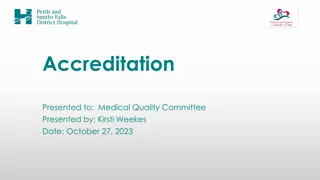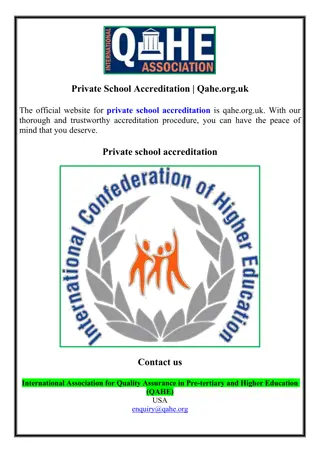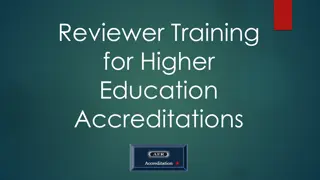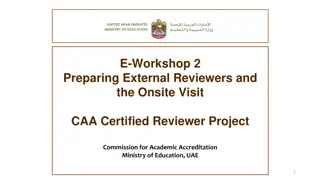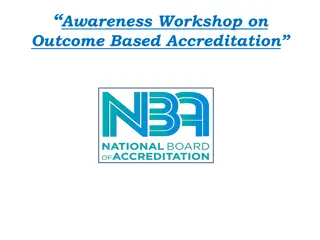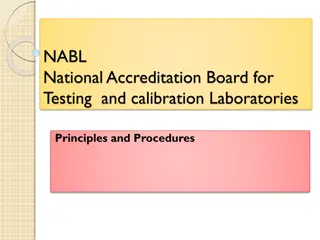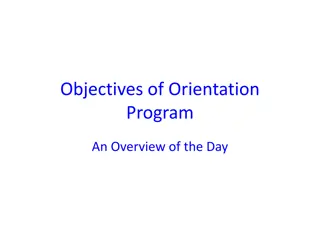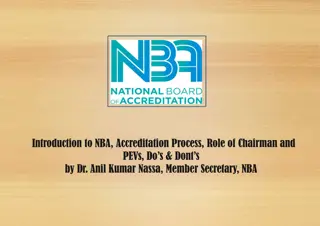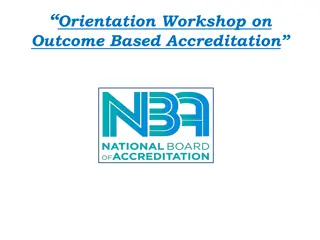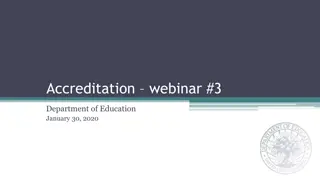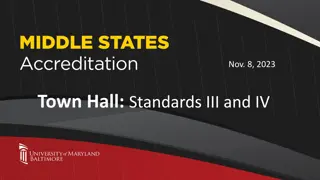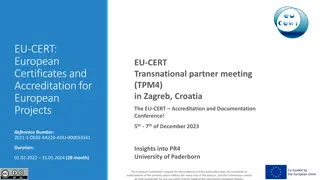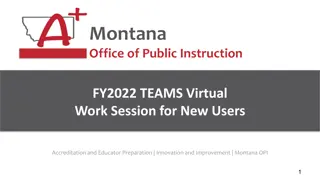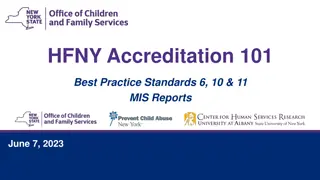Efficient Program Accreditation Panel Chair Guidelines
Detailed guidance for Program Accreditation Panel Chairs, emphasizing leadership skills, group dynamics, and quality checks to shape educational outcomes effectively. The process outlines key elements to foster a culture of quality in education and produce competent, workplace-ready graduates. It also highlights the length, volume, and typical work plan for panel members.
Download Presentation

Please find below an Image/Link to download the presentation.
The content on the website is provided AS IS for your information and personal use only. It may not be sold, licensed, or shared on other websites without obtaining consent from the author. Download presentation by click this link. If you encounter any issues during the download, it is possible that the publisher has removed the file from their server.
E N D
Presentation Transcript
My experience Program Accreditation Panel Chair
FULFILLING SHAPING EDUCATIONAL OUTCOMES FOR A BETTER SAMOA
Learning experience Leadership and Organisational Skills Effective Communication and Interpersonal Skills Decision-making Skills Report Writing Skills Team Focused Resourceful Innovative Assertive calm but firm
Panel composition Gender balanced What you need? 01 02 Knowledge, Expertise and Experience. Varies depending on available expertise in a particular industry/field. Recognize strengths Group Dynamics 03 04 Appreciate the group dynamics of each panel build trust, hold each one accountable and be able to reach a collective decision. Draw on strengths of each panel member & allocate tasks accordingly.
THE BENEFITS PA PROCESS CULTURE CLEAR CRITERIA 10 Elements to guide the process Organization, Program Development & Review, Program Delivery, Assessment & Moderation, Reporting Learner Achievement, Financial Resources, Physical & Learning Resources, Personnel, Learner Information, Entry & Support and Research. Fosters a culture of quality & safety in education celebrate the strengths & provide options/solutions to address the gaps. ALL ROUNDED GRADUATE Each part of the process is a building block develop a quality all rounded graduate that is competent and workplace ready. QUALITY CHECK Quality checks at each point of the process ensure program meets/exceeds standards.
The process-length & volume LENGTH Work load -panel members & SQA VOLUME time commitment 01 03 LENGTH-varies depending on completeness of the Provider s submission 02 04 VOLUME of work - Substantial
Typical Work Plan MONDAY TUESDAY WEDNESDAY THURSDAY FRIDAY Initial Meeting Initial Evaluation Consolidate findings Site Visit Day 5 days 1 day 1/2-1 day Report Writing SQA SQA Moderate Moderate Draft Report Draft Report 3 days 1 day
Initial Evaluation Assess each PA element Determines scope of work Panel members email findings to SQA Secretariat for consolidation. Tasks are allocated accordingly, based on outcome(s) of evaluation. Clarify & Confirm items for the site visit Requirements & Recommendations Tentative non-compliance items are indicated Requirements & Recommendations identified. Cross-check evidence against criteria, draft questions for site visit and documents and resources to sight.
SITE VISIT Sight Evidence Lack of Organized Exhibition of Student Work Interview Management, Lecturer s & Students Inadequate Time
CHALLENGES/IMPROVEMENTS PA PROCESS Continuous Improvements Provider Ensure all required evidence is collected prior to panel evaluation/on- going work in progress Submission/ evidence Incomplete/not in place Unnecessary delays Evidence Grace period provided to transition to full compliance-address requirements Standards are relaxed to some extent Probationary period cut-off point Enabling Environment Did the learner receive the complete learning package to be competent & workplace ready? Time gap between Panel assessment, Provider action & Final accreditation Offer up-grading micro- courses to address learning gaps Dis-service to learners Physical & Financial, Informational, Human & PSET Fund & establish/strengthen Address the gaps Learning



